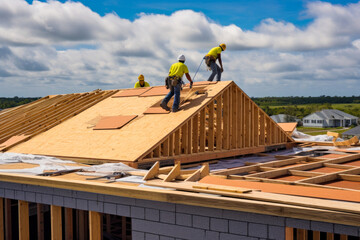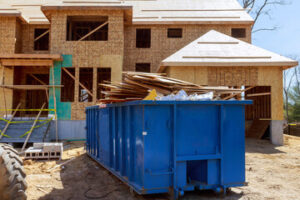SYBO Roofing and Construction of Punta Gorda LLC is a person who puts roofs on buildings and repairs damaged ones. This person may be licensed as a roofing contractor or work for a company specializing in roofs.
A typical job description for a roofer includes inspecting a structure to determine the best action. They also measure and cut materials to fit around vents, chimneys, and walls.

A roofer is a person who puts roofing materials on buildings. They may be licensed as a roofer, work as a general contractor who also does roofing, or own a roofing company. They can also work as part of a construction team and collaborate with other professionals on the project, such as carpenters, plumbers, and electricians. Roofers inspect structures to assess their condition and determine the most appropriate roofing materials for each job. They also install vapor barriers and insulation to create a more watertight seal. Other duties include repairing leaky roofs, fitting skylight windows, and replacing lead sheeting and cladding. They are also responsible for ensuring that all safety standards are always followed. They must also be good at communicating with customers and addressing any issues during a project.
A roof is a critical part of any building and protects everything inside. Roofers work on new installations, renovations, and repairs and must be able to climb to high heights. They also decide on the materials, substrates, and supportive accessories for roofs.
Those who want to become roofers can earn their qualifications through a high school diploma, a college degree, or completing an apprenticeship. Some colleges offer courses that familiarize students with the skills used in roofing, such as a shop, basic mathematics, and mechanical drawing. Those who complete an apprenticeship can earn a salary while learning the trade. They also receive mentoring from experienced roofers.
In addition to their training, most roofers must attend safety and work-related classes every year. They must also be able to work in a variety of weather conditions. Many roofers also need a Construction Site Supervisors Card (CSCS).
Although there are no specific education requirements for becoming a roofer, most employers prefer applicants at least 18 years old. Those who have completed a high school education with courses in mathematics, workshops, and mechanical drawing are usually preferred by employers. They must be able to follow instructions and have the physical strength to carry out their duties. Most roofers need on-the-job training before they can begin working independently. Those with experience start as helpers and may need several years to acquire the necessary skills for more complex tasks. Those who prefer to be self-employed should check with their local government for licensing regulations.
Roofers make a good living, but their salary can vary depending on several factors. Some of these include job location, company, and level of education. It is important for people considering becoming a Roofer to research what the average salary is in their area.
A roofer is a licensed contractor who is responsible for the installation and repair of roofing systems. This person may work on roofs for private homeowners or commercial clients. In some cases, a roofer may also work as a part of a general construction crew or for a construction management firm specializing in building projects.
Regardless of the type of work a roofer does, they must adhere to all safety standards. They should also keep their skills sharp by attending training courses every year.
According to TurboTax, the median annual income for a Roofer is $41,000. This amount includes taxable wages, tips, and bonuses. Other significant sources of income for Roofers include self-employment and other earnings reported on box 1 of their W-2 forms. Whether working as an independent contractor or with a roofer’s company, people in this position can increase their salary by changing jobs or pursuing additional education.
Wood roofs have a beautiful, natural aesthetic that can enhance the look of almost any home. Wood can make your house stand out whether you’re going for a craftsman-style Tudor or a beach-side cottage. Wood is also an energy-efficient choice and can be layered with additional insulating materials to help reduce your electricity bills even further.
The kind of wood you’ll use in your wood roof depends on your preferences and climate, but cedar remains the most popular option. Cedar is naturally weather-resistant, durable, and energy-efficient. It’s also easy to seal and more resistant to insects than other kinds of roofing wood.
Consider a wood-shake roof if you want a more rustic look for your home. Shakes are textured and irregular in shape, unlike shingles, which are uniform in appearance. Typically made of cedar, cypress, or pine, this type of roof has more of a rugged, country feel.
Shakes are available in various cuts, but the best option is an edge-grain cut. This means the shingle or shake is cut perpendicular to the tree’s rings, which gives it stability and durability. Flat grain shakes or shingles are less stable and can be more likely to distort over time.
Another thing to keep in mind is that wood can be vulnerable to fire if it’s not treated with preservatives and other protective coatings. You can apply these to a wooden roof before it’s installed, but they’ll need to be reapplied over the years as needed.
If you’re a fan of the natural look of wood but want to avoid dealing with the upkeep and vulnerability, you can opt for composite shingles instead. This synthetic material is shaped to look like real wood and comes in a wide range of color options. It’s also a sustainable option as long as it’s recycled from ethically harvested sources. However, it’s important to note that this is less durable than a genuine wood roof and will only last for a while. It’s also not as fire-resistant as a traditional wood roof.
As the name suggests, synthetic roofs are manufactured to mimic the look of natural roofing. Often, they also offer added properties such as impact resistance for locations that experience large hail and uplift resistance in high wind conditions. They can be made of various materials, including recycled polymers, rubbers, clays, plastics, and asphalt. This wide range of materials allows for various aesthetic choices and helps the budget-oriented consumer find a great fit.
Aside from their durability, another reason homeowners are increasingly choosing synthetic shingles is their environmental friendliness. These shingles are produced with recycled material; many are even completely recyclable after use. Additionally, the manufacturers of these shingles often incorporate advanced UV inhibitors that help decrease wear from the sun’s harsh rays.
Many of these shingles are backed by an industry-leading 50-year warranty, which adds further value and peace of mind to the homeowner. They are much lighter than their authentic slate and wood alternatives, making them easier to install. Plus, they don’t require additional reinforcement to the home’s framing like a traditional slate or wood roof.
While it may seem counterintuitive, synthetic shingles are more energy efficient than their natural alternatives. This is because the advanced UV inhibitors in these shingles help reflect the sun’s heat and rays. This reduces the demand for air conditioning systems and decreases the infamous “heat-island” effect experienced in heavily populated areas.
In addition, these shingles’ safety features are unparalleled compared to cedar and slate. Unlike those two popular roofing options, they are Class-A fire-rated, with the highest possible rating for roof materials. That means they are not flammable and resist the spread of fire, providing you with the utmost safety and protection for your family.
If you’re considering a new synthetic roof, we recommend you consult a professional roofer to determine your best option. Our team of experts is ready to guide you through the entire process. To start, schedule your free roofing inspection by clicking the button below!




